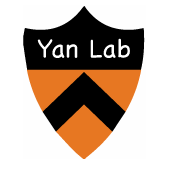Analysis of the selectivity filter of the voltage-gated sodium channel Na(v)Rh
Type
NaChBac is a bacterial voltage-gated sodium (Nav) channel that shows sequence similarity to voltage-gated calcium channels. To understand the ion-permeation mechanism of Nav channels, we combined molecular dynamics simulation, structural biology and electrophysiological approaches to investigate the recently determined structure of NavRh, a marine bacterial NaChBac ortholog. Two Na(+) binding sites are identified in the selectivity filter (SF) in our simulations: The extracellular Na(+) ion first approaches site 1 constituted by the side groups of Ser181 and Glu183, and then spontaneously arrives at the energetically more favorable site 2 formed by the carbonyl oxygens of Leu179 and Thr178. In contrast, Ca(2+) ions are prone to being trapped by Glu183 at site 1, which then blocks the entrance of both Na(+) and Ca(2+) to the vestibule of the SF. In addition, Na(+) permeates through the selective filter in an asymmetrical manner, a feature that resembles that of the mammalian Nav orthologs. The study reported here provides insights into the mechanism of ion selectivity on Na(+) over Ca(2+) in mammalian Nav channels.

